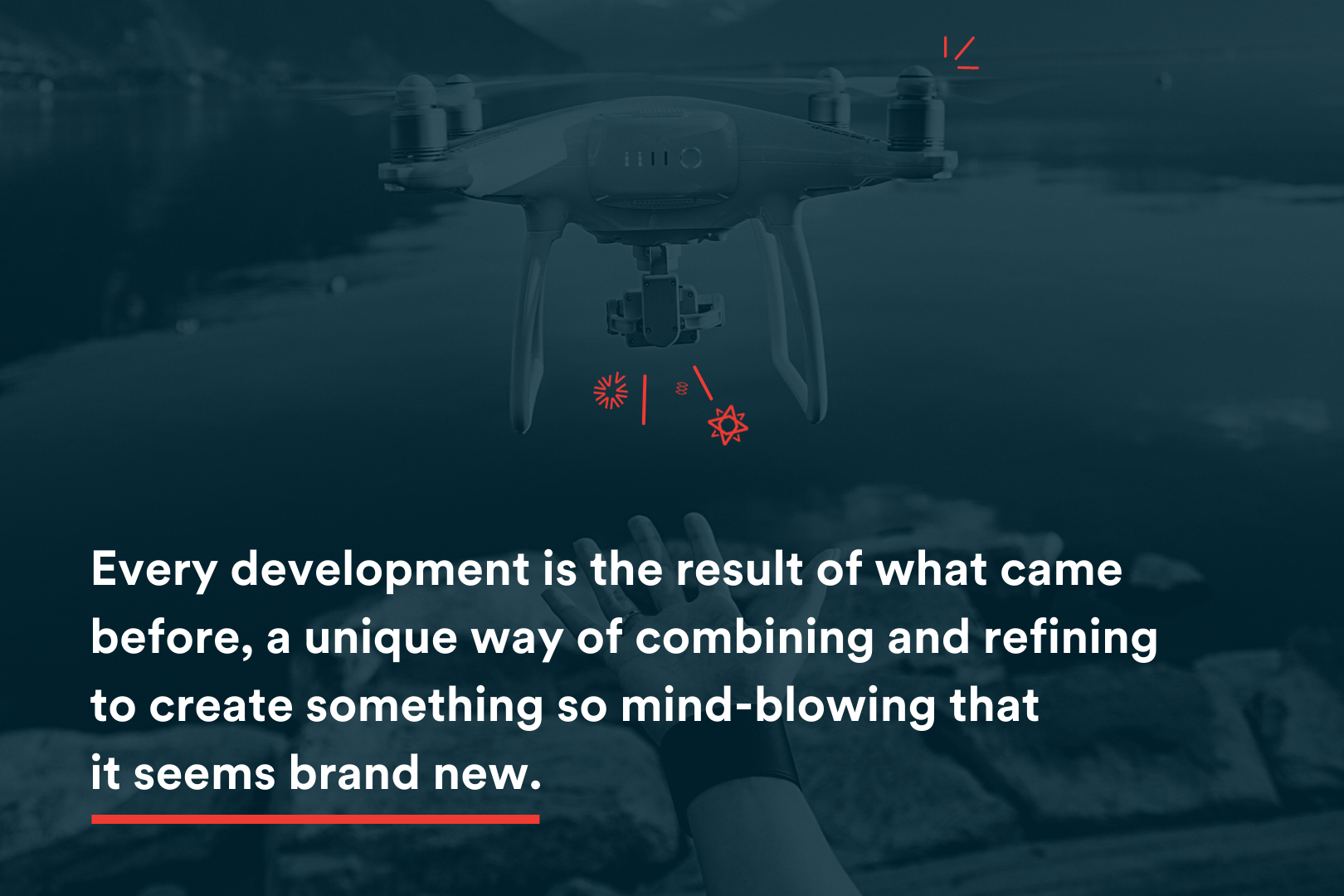software development | Internet of Things | Technology Convergence
The internet of things has grown so all-encompassing that you probably don’t pay it any attention.
You drive your car without thinking about how it seamlessly weaves intelligent traffic analysis, internal system monitoring, physical processes (i.e. push gas pedal = go), internet connectivity, and Bluetooth-based music playback all at once. You log in to your work computer without truly noticing how amazing it is that you can use one device to check the weather, look at emails, listen to music, write a report, browse social media, and make banking transfers.
These technological marvels would have been mind-blowing just a couple decades ago, and now we don’t even think about them.
Innovation is all around us, in our pockets, in the tools we use every day. They carry across every industry and every facet of life. And they all share one thing in common:
They're all the result of technology convergence.
To see just how much of an impact technology convergence has had on our lives, we’re going to examine the meaning of this concept and provide 5 examples of different types to give you a better idea of how tech convergence is all around you.
With the right mindset, you could even put the convergence of technology to work for you, using it to establish a new means of problem-solving and product development that opens doors to entirely new industries.
Technology Convergence Definition
At its simplest, technology convergence is the act of bringing two or more disparate technologies together into one single product or service.
Technology convergence has been going on for centuries, arguably even millennia, but it’s only in the digital age that we’ve really put a name to this phenomenon and began to study it in-depth.
Once upon a time, some enterprising individual came up with the idea for the wheel, and they or someone else realized that if you combine that wheel with a large stable surface and baskets used to carry any manner of goods, you could transport materials a lot more efficiently. Much later, someone else realized you could lay down tracks to move materials even faster, and if you have a coal-burning engine of some sort, that transportation gets quicker still. Eventually, a motor was added to the equation, spurring the development of automobiles.
Each of these iterative innovations is a type of technological convergence, and each evolved what we’re capable of as a species and spurred new industries and innovations.
Every development is the result of what came before, a unique way of combining and refining to create something so mind-blowing that it seems brand new. Yet every single product shares DNA with a myriad of other products, and differing combinations of those building blocks ultimately jumpstart innovation.
5 Examples of Technological Convergence
Let’s look at some current examples of technological convergence to get a better idea of what this means.
Smartwatches
The modern Smartwatch is one of the easiest products to illustrate tech convergence in action.
Smartwatches like the Apple Watch or any number of competitors combine the operating system and capabilities of a Smartphone with the functionality of a watch. It’s a perfect example of tech being used to innovate within a traditionally analogue space.
Within that single space, you can also iterate to introduce more new technologies. A fitness tracker, for instance, brings numerous health applications under the umbrella of the smartwatch. You can combine this with Electronic Health Record (EHR) connectivity to store and track vital health information your doctor can access.
Every system or application update within your Smartwatch (or any device, really) is arguably just the latest example of tech convergence. But it all starts with the idea of combining “Smart” technology with an analogue system we’ve been wearing on our wrists for hundreds of years.
Drones
Just in case you think modern advancements are largely confined to the digital realm, plenty of exciting examples of tech convergence are happening within the fields of robotics, aeronautics, and more.
Look no further than drones for an example of this. Drones continue to grow more agile and user-friendly every single year. They are what happens when engineers make rapid strides in aerial propulsion and dexterity and combine that with advancements in user experience applications and communication. Put it all together and you have remotely piloted aircraft that range from models easily controlled by hobbyists to state-of-the-art systems used by private businesses and the Armed Forces for reconnaissance, search and rescue missions, and more.
Many different technologies had to come together to make the modern drone industry a reality, and the sharing of knowledge between enterprise/government users and hobbyist tinkerers can spur innovation that runs both ways.

Virtual Reality (and Augmented Reality)
Virtual reality has existed in some form or another for a few decades, yet its capabilities never quite lived up to its promise until very recently.
The modern virtual reality headset, as exhibited by systems like the Oculus Quest, the Valve Index, Playstation VR, and more, are made possible due to advancements in computer processing power, chip size, screen technology, graphics engines, and even lightweight construction materials.
It’s the combination of all these factors together that have created a burgeoning virtual reality industry. On its own, each is impressive, but it’s only upon convergence that something truly special and unique is created: the ability to seamlessly navigate virtual worlds like never before.
Augmented reality is yet another iteration of this, combining high-tech camera equipment with the incredible processing power of modern VR systems and cloud-based data retrieval to create a heads-up display detailing information about the world around you.
Cryptocurrency
Cryptocurrency, popularized by the rise of bitcoin and other non-centralized tokens, is another good example of different technologies converging.
Central to the emergence of cryptocurrency is block-chain technology. Think of a block-chain as an ever-running digital printing press that creates increasingly complex unique digital signatures that cannot be duplicated. With each “minting” of a coin, a digital block has been added to the chain, ensuring each subsequent coin and validation of said coin requires more and more processing power (this is where you may have heard the term crypto-mining).
This market of digital signatures is the bedrock of cryptocurrency, which is itself the convergence of blockchain technology with digital finance software, storage applications, security advancements, and more.
We choose this because it’s an example of a completely new industry spinning up from a traditional space yet combining with advancements in technology to create something entirely new. And even this is being iterated upon with the rise in the Non-Fungible Token (NFT) market.
Wireless Headphones
Wireless headphones are an interesting case wherein the tech convergence was actually a direct result of removing a benefit so commonplace that it was accepted as an absolute necessity.
Wireless headphones result from the convergence of headphone audio technology with Bluetooth technology. But the convergence of these two systems also coincides with the removal of headphone cords. Because the audio requires no external wiring system to get from the music player to the reception device, no cords are necessary.
It’s important to note, however, that although the cord might often get tangled or otherwise be cumbersome, it was historically considered a benefit, as it helped ensure an individual headphone wouldn’t be separated from its sibling. Imagine a world where the headphones had separate cords for right and left, and you see how cumbersome this setup would be.
This shows that sometimes technology convergence happens, counter-intuitively, when you actually remove a previously integral tech piece. The cordless phone. Electric vehicles without internal combustion engines. Cloud storage without on-premises servers. Each is an example of addition by subtraction, yet only made possible through advances in other tech frontiers.
The Emergence of Convergence
Technology convergence is a tale as old as time. And if you approach problem-solving with the right mindset, you can put this concept to work for your organization.
That’s something we teach our engineers at Aviture, and we’d be happy to help you come up with the next big idea too.





